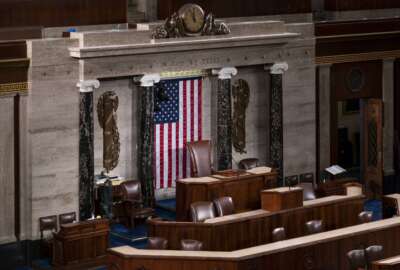Getting USPS back to black
If the OIG\'s proposals were placed in effect, the Postal Service could potentially recover $142.4 billion. Details from USPS\'s Lorie Nelson.
By Suzanne Kubota
Senior Internet Editor
FederalNewsRadio.com
Federal News Radio continues to follow the financial woes of the Postal Service.
It’s long been held that when you can’t make ends meet, there are only a few options: make more, spend less or come up with some combination of the two.
The Postal Service Inspector General’s office has some specific details about how the Postal Service can get back-to-black.
Lorie Nelson told Federal News Radio, the Office of Inspector General has thoughtfully combined details from four reports into one to try to help.
Nelson, the Director of Financial Reporting in the Office of Audit for the OIG said “that’s what we’re trying to do here is put a summary together so that Postal Service can work with Congress and stakeholders, OPM, to come up with a respectable solution as it continues its cost cutting measures and trying to increase efficiency.”
Earlier, the OIG said the USPS should try to recover overfunding in the pension and retiree health care funds. That right there, said Nelson, could recoup $142.4 billion.
Combine that with creating a refined business model and cost cutting efforts, and the USPS could be back in the black.
One of the things slowing everything down is needing Congress to approve some of the parts. In the meantime, Nelson said it’s possible for the Postal Service to borrow funding. She explained there are some regulations and limits as to the amount it can borrow, “however if they enacted some of these, there would be some more flexibility with the cash and the Postal Service could extinguish some of its debt in the event it that would have to borrow for future cash requirements.”
In the meantime, Nelson said management has taken some action on previous reports and is working with Congress, “and we’re hoping that continues.”
Next up for Nelson’s office is the release of a report about funding the pensions at the benchmark levels at “80% for the pensions and 30% for the retiree health fund.”
Copyright © 2024 Federal News Network. All rights reserved. This website is not intended for users located within the European Economic Area.





